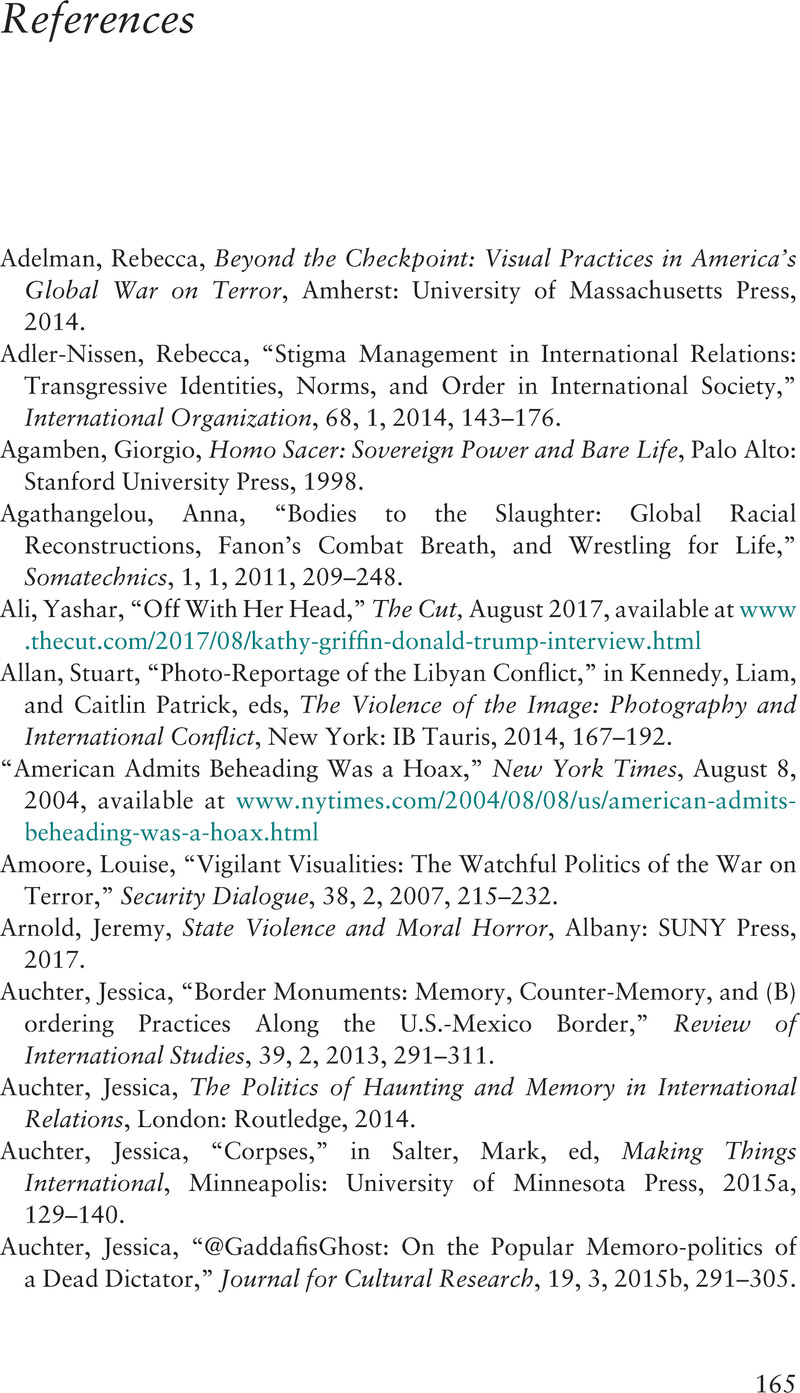Book contents
- Global Corpse Politics
- Global Corpse Politics
- Global Corpse Politics
- Copyright page
- Contents
- Acknowledgments
- 1 Visualizing Corpse Politics
- 2 HORRIFICALLY GRAPHIC
- 3 The Visual Politics of ISIS Beheadings
- 4 Dead Terrorists and Dead Dictators
- 5 Proof of Death
- 6 Displaying the Dead Body
- References
- Index
- Cambridge Studies in International Relations
- References
References
Published online by Cambridge University Press: 24 September 2021
- Global Corpse Politics
- Global Corpse Politics
- Global Corpse Politics
- Copyright page
- Contents
- Acknowledgments
- 1 Visualizing Corpse Politics
- 2 HORRIFICALLY GRAPHIC
- 3 The Visual Politics of ISIS Beheadings
- 4 Dead Terrorists and Dead Dictators
- 5 Proof of Death
- 6 Displaying the Dead Body
- References
- Index
- Cambridge Studies in International Relations
- References
Summary

- Type
- Chapter
- Information
- Global Corpse PoliticsThe Obscenity Taboo, pp. 165 - 186Publisher: Cambridge University PressPrint publication year: 2021



